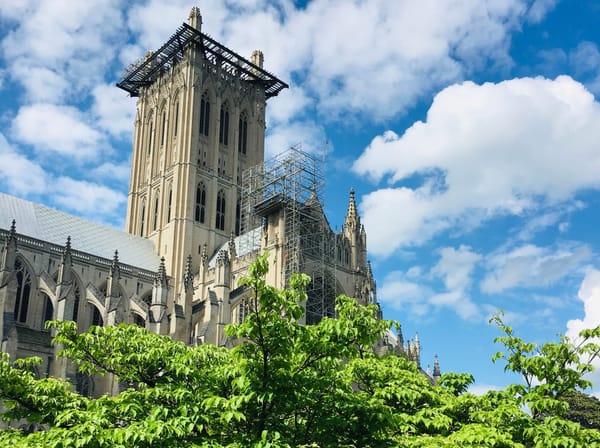Evolving Cities: How Will Architecture Respond?
As we face the challenges of climate change, urbanization, and a fragmented global landscape, architecture must evolve—becoming more dynamic, adaptive, and interdisciplinary.

Architecture, the art and science of shaping our environments, finds itself at a crossroads. Despite its long history of innovation, the discipline has become increasingly stagnant in recent years, struggling to keep pace with the rapid changes in technology, society, and the natural world. As we face the challenges of climate change, urbanization, and a fragmented global landscape, architecture must evolve—becoming more dynamic, adaptive, and interdisciplinary.
The forces driving this change are manifold: climate imperatives demand sustainable and resilient designs, advances in digital technology, particularly artificial intelligence (AI), unlock unprecedented opportunities, and growing social demands call for spaces that foster connection and well-being. Together, these pressures are reshaping architecture and urban planning, paving the way for cities that are healthier, more sustainable, and better equipped to meet the needs of their inhabitants.
Cities represent humanity’s greatest achievements. They are centers of culture, economic growth, and innovation. But they are also sites of intense challenges—pollution, social isolation, climate vulnerability, and rising mental health concerns. Traditional approaches to urban development, which often prioritize efficiency and density over well-being and sustainability, are no longer sufficient. Architecture must rise to the occasion, transforming urban spaces into living, breathing ecosystems that work in harmony with nature and technology.
One promising avenue is biophilic design—a philosophy that integrates natural elements such as vegetation, water, and light into the built environment. This approach goes beyond aesthetics, recognizing that human health and happiness are intrinsically linked to nature. Biophilic buildings function as living systems: purifying air, cooling spaces, generating energy, and managing water.
Landmark projects like Stefano Boeri’s Bosco Verticale in Milan and WOHA Architects’ Parkroyal on Pickering in Singapore demonstrate the transformative potential of this approach. These vertical forests and green-clad structures not only beautify their urban surroundings but also address pressing environmental concerns, offering habitats for flora and fauna while simultaneously reducing heat and improving air quality. They show that architecture can do more than meet human needs—it can actively regenerate the environment.
Equally transformative is the advent of machine learning and AI, which is already beginning to reshape architecture. These technologies promise to revolutionize design and construction processes, accelerating timelines, reducing costs, and fostering creative exploration. AI-driven design tools can simulate complex environmental conditions, optimize energy efficiency, and generate innovative solutions to urban challenges. Furthermore, AI enables the real-time monitoring and management of interconnected building systems, improving performance and adaptability.
Growing up in Silicon Valley, I witnessed firsthand the early adoption and impact of machine learning systems and their potential to disrupt traditional industries. From self-driving cars to predictive algorithms, these systems are not just tools—they are collaborators, augmenting human capabilities in ways we are only beginning to understand. In architecture, this collaboration could redefine the relationship between designers and their creations, fostering more innovative, personalized, and efficient urban environments.
One exciting frontier is the synergy between AI and biophilic design. Imagine a city where AI systems manage biophilic infrastructures—predicting when vegetation needs irrigation, optimizing air filtration, or adjusting natural lighting to enhance occupants’ well-being. Such integration could transform cities into adaptable, self-sustaining ecosystems, enhancing urban life while mitigating its environmental footprint.
The challenges facing cities are not uniform. From rising sea levels in coastal regions to extreme heat in urban centers, architecture must respond to a diverse array of climate and social pressures. This requires rejecting one-size-fits-all solutions in favor of context-sensitive designs that reflect local conditions, cultures, and needs.
The rise of mass customization, enabled by digital fabrication and AI, offers a path forward. Architects can now create tailored solutions at scale, addressing the specific challenges of different urban contexts while preserving the unique character of each community. This approach also opens the door to greater inclusion, allowing marginalized voices to play a more active role in shaping their environments. For instance, AI-powered platforms could enable participatory design processes where communities directly contribute to decisions about their spaces, ensuring that urban development reflects their priorities, challenges, and aspirations.
The future of architecture lies at the intersection of technology, nature, and human-centered design. By embracing biophilic principles and AI-driven innovation, we can create cities that are not only more sustainable but also more equitable and vibrant. However, achieving this vision requires a shift in mindset—away from architecture as a static, monumental practice and toward a more fluid, adaptive, and interdisciplinary approach.
Architecture has the power to transform not only our cities but also the way we live, work, and connect. It is time to embrace this potential and reimagine the built environment as a dynamic, living system—an architecture not just of buildings, but of life itself. The cities of tomorrow will not simply house people; they will empower them, fostering communities that are resilient, creative, and deeply connected to the natural world.
As architects, planners, and citizens, we must ask ourselves: What kind of cities do we want to build? Will they be reactive, struggling to catch up with the challenges of the 21st century? Or will they be proactive, anticipating and shaping the future in ways that enhance both human and ecological well-being?





